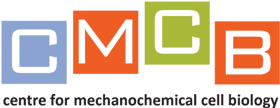

 Research summary
Research summary
Cell migration through complex tissue barriers is a key driving force behind essential life processes such as embryonic development and immune homeostasis as well as pathological conditions such as inflammation and cancer metastasis. Within a living organism, cells do not migrate in isolation and hence understanding the mechanical and biochemical interactions between the migrating cells and the surrounding environment is crucial in understanding cell migration in vivo. My lab uses the migration of Drosophila melanogaster macrophages during embryonic development to answer these fundamental questions. Drosophila macrophages share several similarities with vertebrate macrophages in their origin, development and behavior and we use a combination of genetic manipulations with quantitative live imaging, biophysical tools and mathematical modeling. Currently the lab is focusing on two key aspects: (1) How do macrophages sense the stiffness of the surrounding tissues and alter their force generating machinery to facilitate migration? (2) How does the macrophage generated forces affect mechanics, cell fate and positioning of the surrounding tissues?
> Faculty page is here
> Wellcome-Warwick Quantitative Biomedicine (QBP) Programme page is here

Ratheesh A et al. Drosophila TNF modulates tissue tension in the embryo to facilitate macrophage invasive migration Developmental Cell. 2018 May 7;45(3).
Ratheesh A et al. Drosophila immune cell migration and adhesion during embryonic development and larval immune responses Curr Opin Cell Biol. 2015 Oct;36:71-9.
Ratheesh A and Yap AS. A bigger picture: classical cadherins and the dynamic actin cytoskeleton Nat Rev Mol Cell Biol. 2012 Oct; 13(10): 673-9.
Ratheesh A et al. Centralspindlin and α-catenin regulate Rho signaling at the epithelial zonula adherens Nat Cell Biol. 2012 14, 818–828.
Ratheesh A and Yap AS. Doing cell biology in embryos: regulated membrane traffic and its implications for cadherin biology F1000 Biol Rep. 2010 Apr 27; 2.